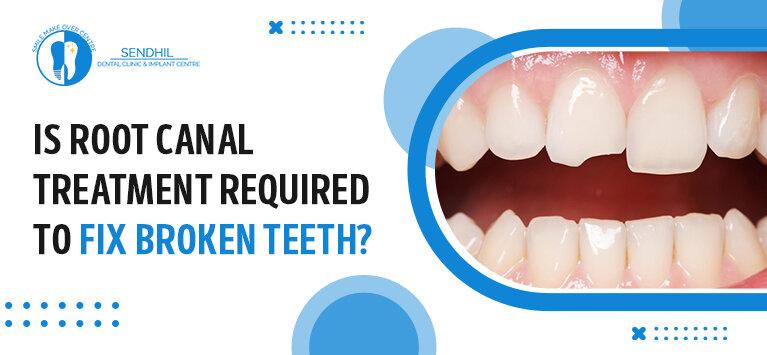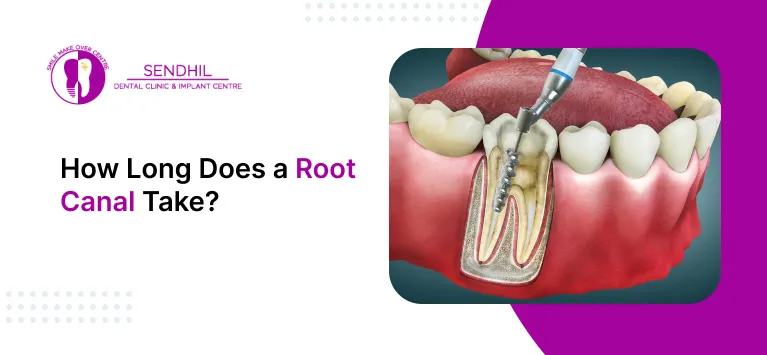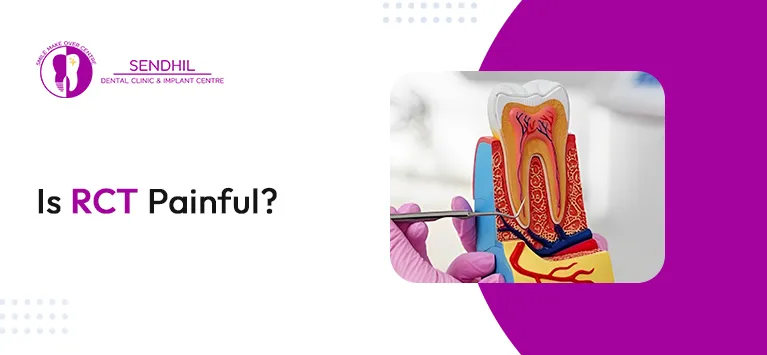
How to Stop Throbbing Pain After Root Canal
Got your root canal done but still feeling that throbbing pain?
Many people experience pain after root canal treatment, especially in the first few days. Some discomfort is completely normal while your tooth and surrounding tissues are healing. But if that pain feels sharp, throbbing, or doesn’t seem to go away — it’s important to know why and what you can do about it.
In this blog, let’s talk about why throbbing pain after root canal happens, what’s normal, and how to relieve it fast so your recovery becomes smooth and pain-free.
Table of Contents
Root Canal Treatment
A root canal is performed when the pulp (the inner tissue of your tooth) becomes infected or inflamed due to decay, cracks, or trauma.
During the procedure, your dentist:
- Removes the infected pulp.
- Cleans and disinfects the inside of the tooth.
- Fills and seals the root canals.
- Places a filling or crown to protect the tooth.
Once the infection is gone, the tooth becomes healthy again. But, as with any dental treatment, some healing time is needed afterward.
Is Pain After Root Canal Treatment Normal?
Yes, it is! Some level of pain after root canal treatment is normal because your body needs time to heal the tissues around the treated tooth.
You might feel:
- Mild soreness when biting or chewing
- Slight swelling or tenderness around the gums
- Occasional throbbing pain after root canal
This happens because the surrounding nerves and tissues may be inflamed from the procedure. Usually, this discomfort fades within a few days as healing progresses.
Why Does Pain Happen After a Root Canal?
A root canal treatment is done to remove the infected or damaged pulp inside your tooth and save it from extraction.
During the procedure, your dentist cleans, disinfects, and seals the tooth.
After that, the surrounding tissue might feel sore for a few days — that’s your body’s natural healing response.
Here are some common reasons for pain after root canal treatment:
- Inflammation in the surrounding tissues – after cleaning the infection, tissues around the tooth can stay swollen for a few days.
- High bite pressure – if the new filling or crown is slightly high, biting can irritate the tooth.
- Temporary infection or sensitivity – sometimes mild infection remains or the area becomes sensitive.
- Healing process – tissues need time to calm down and heal fully.
So yes, pain after root canal for a few days is normal — but you can take steps to ease it quickly.
How Long Does Root Canal Pain Last?
Usually, mild soreness or tenderness lasts for 2–5 days.
By the end of a week, most patients start feeling much better.
However, if you notice throbbing pain after root canal or your discomfort increases instead of decreasing, you should visit your dentist.
Sometimes, additional cleaning or adjustment may be needed.
Root Canal Recovery Time
The typical root canal recovery time depends on how infected the tooth was before treatment and how your body heals.
For mild cases: 3–5 days
For severe infection or swelling: up to 10–14 days
Following your dentist’s instructions carefully can help shorten the root canal recovery time and prevent complications.
How to Stop Throbbing Pain After Root Canal
Here are some simple and effective tips you can follow at home.
1. Take Painkillers as Prescribed
Your dentist may recommend pain relievers or anti-inflammatory medicines.
Take them as directed — don’t skip doses.
This helps reduce swelling and eases pain after root canal treatment faster.
2. Apply Cold Compress
Place an ice pack or a cold towel on your cheek for 10–15 minutes at a time.
Cold therapy reduces inflammation and helps relieve throbbing pain after root canal.
Do this several times a day for the first 24–48 hours.
3. Avoid Hard or Crunchy Foods
Biting hard food can increase pain after root canal because the tooth is still healing.
Stick to soft foods like:
- Soups or khichdi
- Smoothies (no straw!)
- Yogurt
- Mashed potatoes or rice
Avoid chewing on the treated side for a few days.
4. Keep the Tooth Clean (Gently)
- Good oral hygiene prevents infection and speeds up healing.
- Brush gently with a soft toothbrush and avoid pressing hard on the treated area.
- Rinse with warm salt water twice a day — it helps reduce swelling and bacteria.
5. Check for Bite Issues
If your tooth feels “high” or painful when biting, the filling or crown may need slight adjustment.
A high bite can cause continuous throbbing pain after root canal.
Visit your dentist to correct it — relief is often immediate once the bite is balanced.
6. Manage Stress and Avoid Grinding
If you grind your teeth (especially during sleep), it can increase pain after root canal treatment.
Using a night guard or relaxation techniques can help protect your tooth while healing.
7. Follow Up With Your Dentist
Even if the pain reduces, a follow-up visit ensures everything is healing correctly.
Sometimes, the dentist might check your root canal before and after with an X-ray to confirm that the infection is completely cleared.
Root Canal Before and After: What to Expect
Before the Root Canal
You may have:
- Toothache or pressure
- Swelling or gum tenderness
- Sensitivity to hot or cold
- Pain while biting
After the Root Canal
- The infection is gone.
- You can eat without pain.
- The tooth looks and functions normally.
- Any pain after root canal treatment should gradually fade.
This root canal before and after transformation helps save your natural tooth and prevents the need for extraction.
What If Pain Persists After 3 Days?
If you still feel root canal pain after 3 days or if the pain becomes worse, it may be a sign of:
- Incomplete cleaning of infection
- Pressure from filling/crown
- Inflammation in nearby tissues
- A small crack or missed canal
In such cases, your dentist might recheck the tooth or prescribe additional medication to calm the infection.
So if pain after root canal treatment doesn’t ease in 3–5 days, don’t wait — book a review appointment.
Home Remedies to Ease Pain After Root Canal
Along with medicines, these natural remedies can help:
- Warm salt water rinse – reduces bacteria and swelling
- Cold compress – numbs pain and reduces inflammation
- Clove oil dab – natural antibacterial (use sparingly)
- Soft diet and hydration – supports faster healing
These help soothe throbbing pain after root canal and keep the area clean.
When to See Your Dentist Immediately
Call your dentist right away if you notice:
- Sharp or throbbing pain lasting beyond a week
- Swelling in your face or gums
- Fever or bad taste in the mouth
- Tooth feels loose or pressure increases
These signs may mean the infection needs further care.
Conclusion
A root canal treatment is meant to relieve pain, not cause it — but some soreness during healing is normal.
By taking proper care, following your dentist’s advice, and watching for warning signs, you can recover comfortably and quickly.
Remember, throbbing pain after root canal usually gets better in a few days — if not, your dentist can help you fix it and feel better fast.
Your smile deserves comfort and care — and with a little patience, you’ll soon forget you even had a root canal!
















